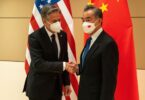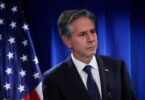At the launching of Economic Survey for 2017-18, Planning Minister Ahsan Iqbal in his usual verbose style claimed that economy has performed well by posting a 5.8 percent growth and the GDP growth target of 6.1 percent could have been achieved if political stability has remained during the last 12 months. But he furiously backtracked on his often repeated claims of spectacular economic gains and said that we never said that Pakistan has turned into US economy.
Another fallacious assertion was made by Finance Minister, Miftah Ismail that that external debt-to-GDP ratio has fallen. The external debt has shot up above $ 90 billion showing an increase of $ 45 billion over the past four years. The World Bank in its report “South Asia Focus Fall, 2017” noted the massive foreign debt as one of worrying fiscal imbalances of Pakistan’s economy.
A cursory look at the performance of different sectors of the economy reveals that the growth targets were not achieved. Agriculture grew by 3.8 percent because the production of rice and sugarcane declined and cotton showed a minimal increase. Likewise the government missed the targets set for industrial sector despite giving it preferential treatment in the supply of electricity. Heavy taxation, blockage of tax refund and sky high tariffs of energy inputs affected the sector performance. Against a target of 7.3 percent, the output of industrial sector stood at 5.8 percent. The output of large scale manufacturing stood at 6.1 percent which was below the official target. The small scale manufacturing grew to 6.1 percent. The government did not facilitate the introduction of latest technologies in the industrial sector and their indigenization. Hence the large scale manufacturing could not improve its efficiency in terms of quantity and quality. Electricity generation grew by 1.8 percent against the target of 12.7 percent. Therefore the government figure of increasing the installed capacity of power generation by 11600 megawatts is not compatible with the power potential added to the national grid. The budget deficit could not be brought down to 3.8 percent of the GDP and has reached 5.5 percent. The current account deficit has reached to 5 percent of the GDP against the target of restricting it to one percent.
The growth rate is insufficient to absorb the youth bulge and significantly bring down the alarming rate of unemployment and the poverty index is rising. The economic growth was led by service sector which is not labor intensive like agriculture and industry. The government did not reveal the latest data of the unemployment for the fiscal year 2017-18 and jobless figure of 5.9 percent was three years old. The rate of unemployment of educated youth has reached the alarming proportion. Every year one million people enter the job market. The growth also failed to address the serious issues like stagnant investment and savings in terms in terms of the total size of the GDP and stagnant exports, resulting in current account deficit of $27.3 billion. The claim of steep fall in the inflation rate from 7.8 percent to 3.7 percent does not stand the litmus test. The increase in consumer price index, cost of living index and 12.7 percent depreciation of currency have pushed it close to double digit. There has been an increase of 50 percent in the prices of representative food commodities including wheat flour, rice, pulses, sugar, lintels and beans, chicken and eggs, vegetables and fruits. The prices of life saving medicines and the ones used for the treatment of seasonal diseases have also significantly gone up. The prices of pharmaceutical products for the control of blood pressure and cardiac diseases like Zestril, Calan and Avasar tablets have increased by 60 percent because of under the table dealing of the government with multinational companies to unilaterally jack the prices of different brands of these medicines. The prices of injections for diabetes control like Hymuline and Lintus Solostar; antibiotics of different generic groups, cough syrups and analgesics have registered more than 60 percent increase in prices. Actions speak louder than words but the government has relied more on rhetoric than appropriate actions to turn around the economy and give its benefits to the common man.






